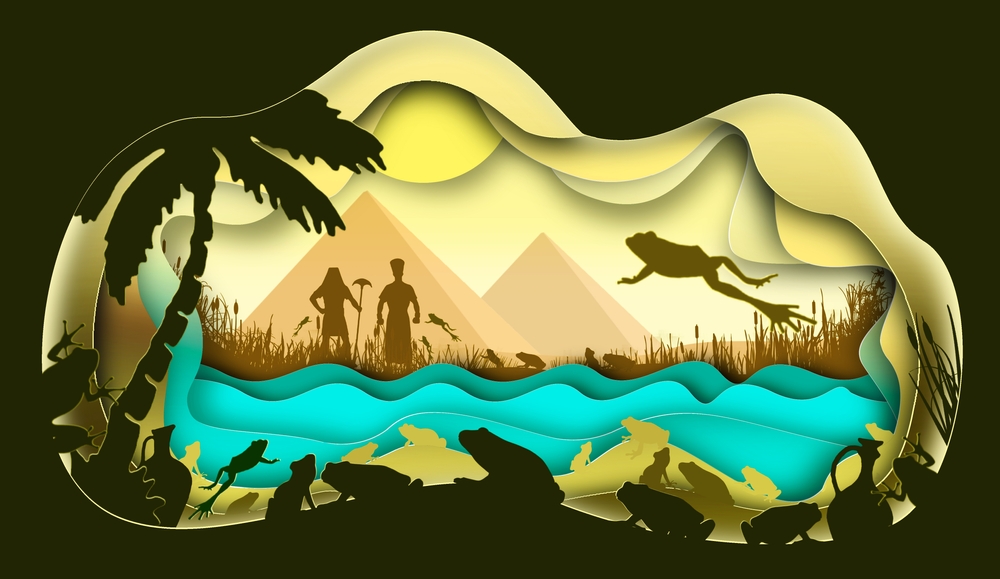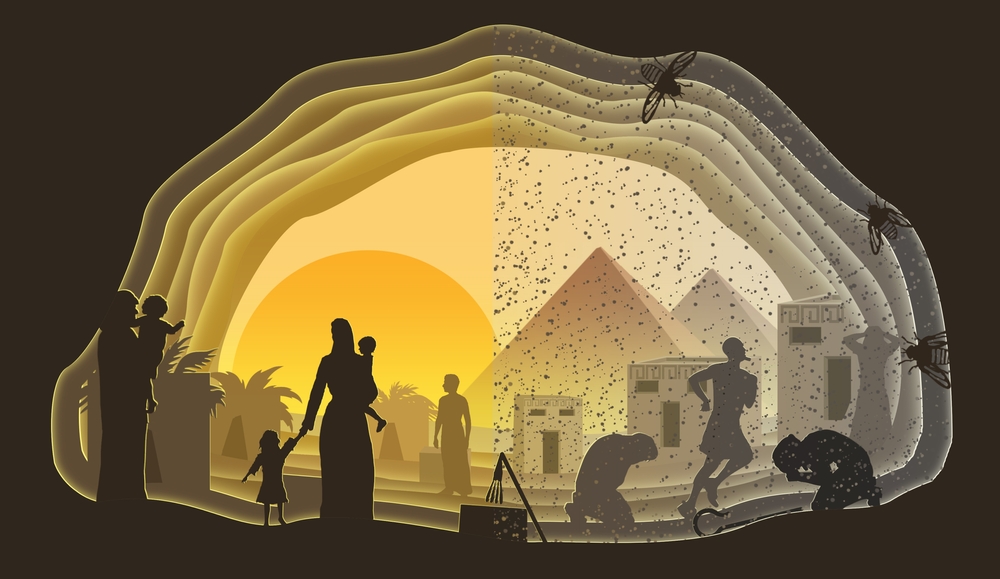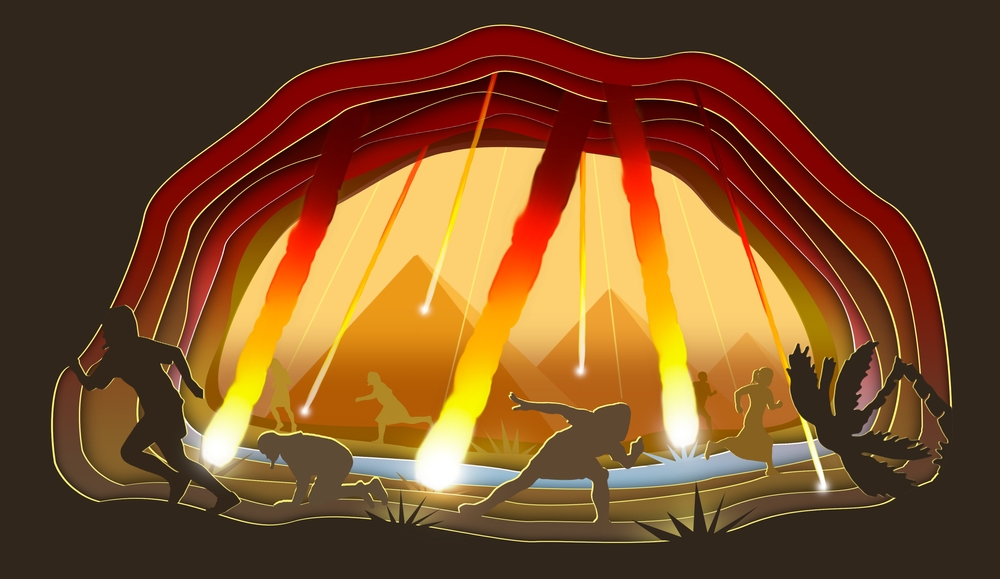The 10 plagues of Egypt - described in the Biblical book of Exodus - were catastrophic events that were meant to compel the Pharaoh to free the Hebrew slaves. Some think the plagues were miracles from God. Others say that they were just inspired by natural disasters. Either way, the epic story of the 10 plagues remains one of the most memorable accounts in the Old Testament.
Jump to:
#1 The Plague of Blood
The first plague struck at the heart of Egypt - the Nile River itself. The Exodus account describes Aaron striking the river with his staff, turning all the waters of Egypt to blood. Fish died, the river stank, and the Egyptians could not drink the putrid water. As the Nile was the lifeblood of Egypt, the corruption of it represented a dramatic divine manifestation that disrupted every level of Egyptian society. While some skeptics explain the phenomenon by pointing to toxic algal blooms that reddened the water, believers see the suddenness and scale as signs of supernatural forces.

#2 The Plague of Frogs
After the Nile turned to blood, the next plague brought a swarm of frogs. They infested homes, beds and even ovens, and the constant croaking drove the Pharaoh to plead for relief. While this plague is scientifically plausible as an overbreeding of Nile frogs after the fish died, believers see divine meaning within it. The frogs’ sudden arrival and departure highlighted God's control over both bringing and relieving afflictions.
Recommended for you!
Best Sellers#3 The Plague of Lice/Gnats
After the frogs came lice or gnats (depending on the translation). Aaron struck the dust with his staff, and it transformed into swarms of insects that covered all men, women and animals. The lice plagued prince and peasant equally. Once again, the religious leaders of Egypt failed where this mysterious god succeeded in bringing affliction.

#4 The Plague of Flies
The fourth plague brought a swarm of flies to the land. It’s said that God sharpened the message by sparing the Hebrews in Goshen from the plague. This emphasised the Israelites’ protection and exemption from His emerging wrath against Egypt’s gods and rulers. The flies brought disease and rot, showing that the plagues were getting worse and leading toward death. Also, the Hebrews' livestock were spared from the flies in Goshen, so Israel was protected while the Egyptians suffered great losses.
#5 The Plague of Livestock Disease
The fifth plague caused sickness and death for all Egyptian livestock, causing extreme hardship. Meanwhile, it’s said that livestock in Goshen survived, enriching the Hebrews. God's favour shone on Israel by shielding their animals and crops while decimating Egypt's. The plague demonstrated God's say over life and death itself. It showed that no worldly wealth or offerings could stop His judgments. Despite being worshipped as a god himself, the escalating plagues revealed the Pharaoh's impotence before God.
#6 The Plague of Boils
Next came an agonising plague of festering boils and sores, leaving many people unable to work. Boils represented impurity spreading through the land. The painful infection ravaged even the sacred priests. This held symbolic meaning, as priests were seen as always being pure before the gods, but the plague on the Egyptian priests undermined their authority.

#7 The Plague of Hail
The seventh plague was a terrible storm of hail, fire and thunder. To announce His supremacy over nature, God is said to have spared Goshen from the worst of the maelstrom. Those who heeded God's will stayed protected, while Egypt felt nature’s full fury. Some historians believe that a volcanic eruption may have triggered the hail and ash that accompanied the storm. However, others believe that the plague’s precise timing (and the isolation of Goshen) point to calculated divine intervention.
#8 The Plague of Locusts
For the eighth plague, locusts (which symbolised desolation in ancient times) were released, devouring all of the remaining crops and vegetation and causing widespread famine. Yet again, God is said to have drawn a line around Goshen, shielding His people from suffering and want.
#9 The Plague of Darkness
For three days, Egypt was covered in thick darkness. It represented ignorance and chaos and, as sun worshippers, the darkness deeply shook Egyptian beliefs that the Pharaoh controlled the sun cycle. Blotting out the sun god Ra demonstrated God's complete dominion. No Egyptian could escape the plague's oppressive gloom and confinement. However, it’s said that Israel enjoyed light even in their captors' bleakest hour.
#10 The Plague of the Firstborn
For the tenth and final plague of Egypt, God struck down all of the firstborn sons in the land, including the Pharaoh's heir. The Hebrews escaped this final plague by smearing lamb's blood on their doors, prompting the angel of death to pass by. This plague represented the final straw where the Pharaoh eventually gave in, finally liberating the Israelites after generations of slavery.
Interpreting the Plagues of Egypt
Scholars propose various symbolic meanings behind the 10 plagues. The number 10 held significance, and represented completion and fulfilment. The plagues also grew progressively worse, giving Pharaoh multiple chances to free the Israelites before the dreadful finale arrived. As we reflect on the Ten Plagues, we recognise their ability to evoke contemplation and curiosity. Some view the plagues as natural occurrences, others see divine intervention, while still others perceive them as ancient metaphors, illustrating the cosmic battle between good and evil.
If you’re inspired by the mysteries of Egypt, then do consider enrolling on our Egyptology Diploma course. Available for £28 (save £98!), it offers not only many fascinating tales of this ancient Civilisation, but also a comprehensive insight into Egypt’s culture, history and spiritual beliefs.













